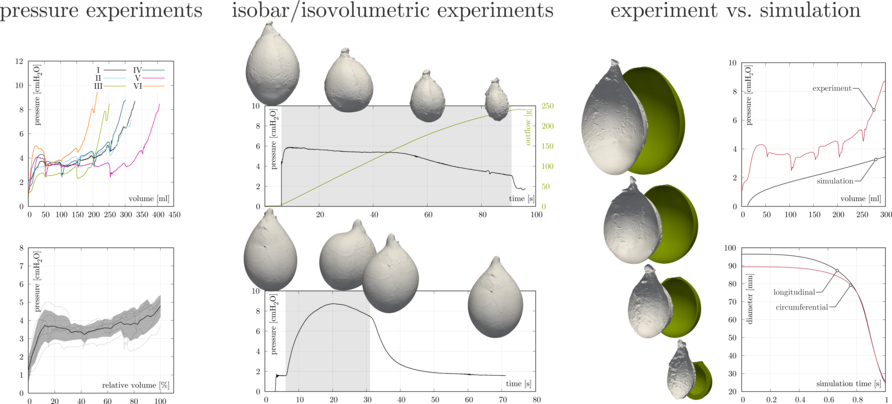Insight into the global deformation of the urinary bladder during passive and active phases is crucial for understanding the biomechanics and function of the organ. Therefore, in the present study, the three-dimensional deformations of the porcine urinary bladder were investigated using 10 cameras in ex vivo experiments. Voltages between 20 V and 40 V were applied to induce contraction without outflow (isovolumetric) and against different back pressures (isobaric). The fluid volume in the bladder and the fluid volume pushed out of the bladder in the active state were measured. During filling, a roughly constant pressure of 2.5-4 cmH^2O was measured for a large volume range, followed by a steep increase. Overall, the urinary bladder shape changes from elliptical to spherical in the active phase, resulting in a more homogeneous stress field. The active pressure decreases with increasing volume, while the actively generated stress increases up to 65 kPa at the maximum volume examined. Smaller filling volumes and lower back pressures allowed complete emptying, whereas higher back pressures prevent full emptying from larger filling states. Finally, a recently developed three-dimensional model was used to describe the active and passive bladder characteristics in order to qualitatively represent the mechanical properties. Overall, this study provides for the first time a comprehensive experimental data set at organ level that leads to an improved understanding of load transfer mechanisms within the urinary bladder and serves to validate corresponding models.
R. Trostorf, E. Morales Orcajo, A. Pötzke, T. Siebert, M. Böl
A pilot study on active and passive ex vivo characterisation of the urinary bladder and its impact on three-dimensional modelling
Journal of the Mechanical Behavior of Biomedical Materials, 133, 105347, (2022) [Link]

